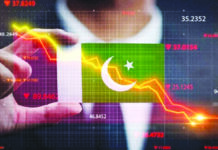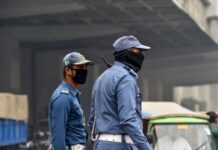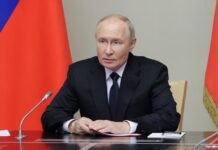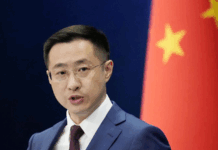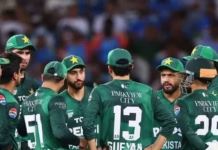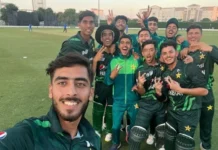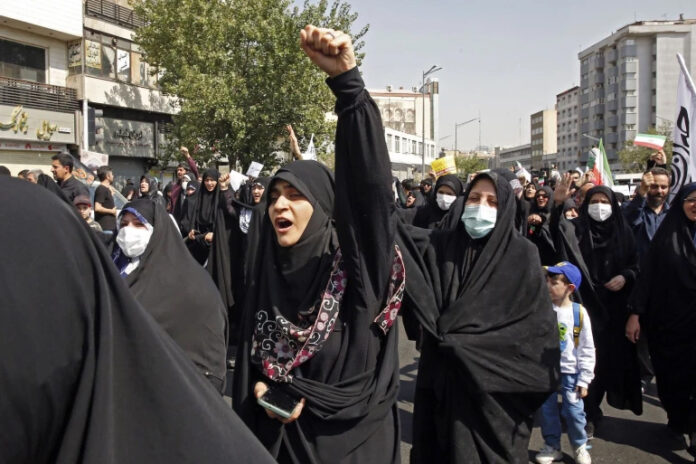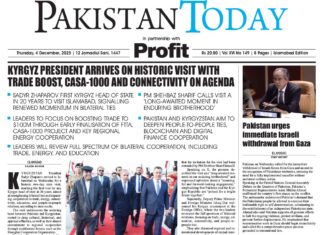Amidst conflicting reports about the fate of the morality police role in the urban areas of the neighbouring Islamic Republic; that of Iran, one thing is more than evident that this internal blow to the unique system of governance will continue to haunt it. In the short run, the republic might be able to recover from the after effects of the blow; in the long term, the wounds can potentially become an ulcer or cancer to eventually eat up the complete system.
As things stand, the government itself claims that the law has been held in suspension or abeyance. There has been no repeal of the Morality Police Law. What has happened is that it has been put on the backburner for now. The opponents of the system; whether within the system and those in the world at large, especially the Western capital’s are interpreting it as a victory for the stance of the protesters. From the standpoint of the Western governments and given the background of strained geopolitical relationship between Iran and the free world, the world is more than happy and content with what it interprets as the ‘repeal’ of a ‘black law’.
In the backdrop of the developments of the last three months and a peek into the mechanics behind the scenes of that society; it has been nothing short of a miracle that one of the most modern societies in the Middle East before the new millennium provided legitimacy to the theocratic system of government for four decades. There has been a time when the people were disgruntled over the affairs of the state. However, like many other nation states; it has been construed as a normal cycle of protest and readjustment on part of both parties; the Nezam (system of governance) and the people who are governed. It has never been thought that the Nezam will be changed in its entirety. Like any other political system, the bet has been to change the dominant political trend through the electoral process. The rise of the reform camp and its ability to shake up the 2009 elections; and be able to elect Presidents to the administrations in 2013 and 2017 was indicative of the adjustment within the system.
During all those periods; the economic sanctions were never softened on Iran; except for the three years between 2015 and 2017, incidentally the reformist era, when the JCPOA allowed post-Revolution Iran a rare window to allow the world to peek into Iran and also allow the Iranians to somewhat renew their business relationship with the outside world. The crippling sanctions before the finalization of the JCPOA and after its termination had its damaging impact upon the Iranian society as well as economy.
Cut off from the international payment system Nostro ; a move advocated by the United States to bring Iran on its knees over presumed nuclear weapon development suspicions or apprehensions; Iran has been able to carry on through various payment arrangements. Despite the fact that pro-West governments, inclusng the Pakistani quasi-democratic-establishment order, shun any trade with Iran. With the Pakistani central bank advising the banking industry to include the Islamic Republic as a ’dangerous geography’, means no opening of letters of credit or other instruments for transactions; it has been India, China, Russia; an independent minded Turkiye and Iraq who allowed Iran the required breathing space.
With 80 percent of the world out of the purview of trade opportunities; it has been a rough ride for the Iranians; not just the Islamic republic itself; but also the people of the republic. Many sanctions apparently slapped to pressure the Iranian theocratic establishment; have usually ended up causing more pain to the common Iranian.
The retreat of the Islamic republic over Hijab in such an international environment is a blow something like, if God forbid tomorrow, Pakistan is asked to surrender nukes. The republic will resurface from the shock in months and years to come. The gamechangers either way will be, how much the regime is willing to adjust and preserve; and secondly and most importantly; how the public construes the same. The barometer for that will be the 2024 Majlis and 2025 Presidential polls. Until then it is going to be a suspense-filled thriller all the way.
That pain has caused two types of reaction within. Among the band of diehard supporters of the Nezam, the resolve to support the system has increased. On the other hand, the people, especially among the urban middle income groups, who have been generally lukewarm supporters of the Nezam it was the time to call it a day, and contribute as much as they can into the change or the downfall of the system.
The Mahsa Amini episode as a matter of fact threw open that section of society in its full force. When compared with the pro-Nezam crowd in any objective 360-degree review; numbers on the government side were invariably more; as evident in the public counter-marches along the same streets where a day before people might have torn down Ashura banners; the supreme leader’s pictures and even dismantled a renowned military hero’s statue in anger.
The question is whether the system is on its way out. Or; alternatively, on the other hand, whether it is open to adjustment. The October 3 Tweet by the Supreme Leader’s Office that many Iranian women who do not observe the ideal Hijab are also supporters of the regime; meant that the leadership was conscious of the undercurrents of change and was willing to accept the same as on face value. A run through the pictorial news reports of the counter demonstrations in Iran in support of the Nezam will reveal that the women in support of the system too have a good deal of hair visible beneath the scarf. That on-ground reality is suggesting that practically the Mahsa Amini episode was a stab on oneself as the result of overzealous implementation of the law.
Analyzing the adjustment process in that society, a look into the Iranian performance in cinema suggests it has not been a doomsday scenario for Iranian directors. The creative scene might only be one expression; despite the talk of internet outage in the Islamic republic; a run through any open source operating system hosting sites and mirrors will reveal that Iran is far ahead of techies like Pakistan and India in this regard.
However, given the fact that the republic has surrendered to the public will, as is being presumed now, and as it has been adjusting; will that readjustment finally dilute the ‘Wilayat Faqeeh’, a physical trigger to do away if the current supreme leader gives in to old age and progressively poor health. Or; alternatively, it will survive and readjust still.
The ground situation suggests that the Western powers would like the end of the Islamic Republic.; as the Iranian republic is a living counter-narrative; as were the Soviet and Chinese Marxist regimes in the last century. The Russian experiment failed, but the Chinese experiment is giving them a run for their money. Therefore, in the end the external factors will not allow the internal adjustments to sustain. A mix of internal strife fueled by covert support and external military and economic pressure at best suits the world.
The retreat of the Islamic republic over Hijab in such an international environment is a blow something like, if God forbid tomorrow, Pakistan is asked to surrender nukes. The republic will resurface from the shock in months and years to come. The gamechangers either way will be, how much the regime is willing to adjust and preserve; and secondly and most importantly; how the public construes the same. The barometer for that will be the 2024 Majlis and 2025 Presidential polls. Until then it is going to be a suspense-filled thriller all the way.



